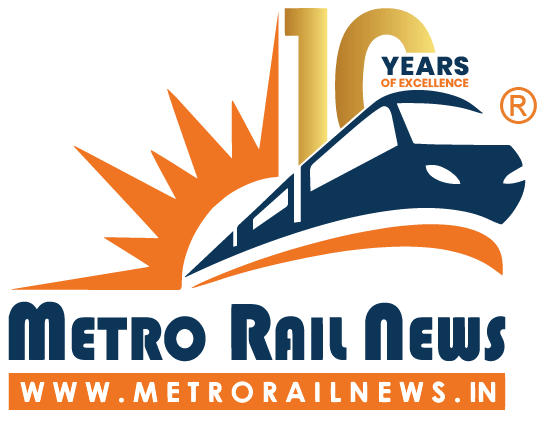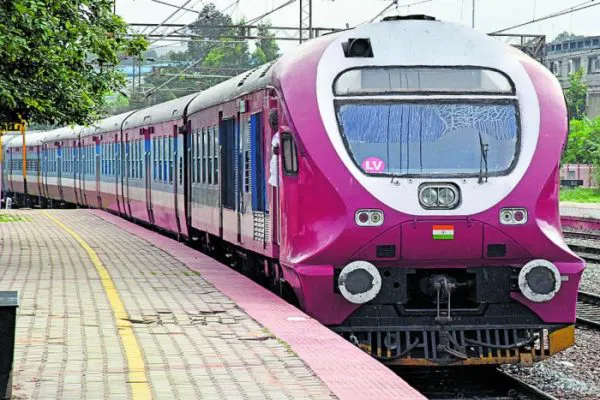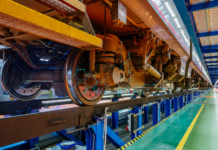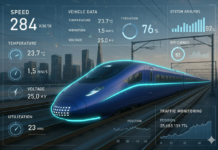Introduction
Bengaluru, referred to as the “Silicon Valley of India,” is the capital and largest city of the southern Indian state of Karnataka. The city is home to numerous multinational technology corporations and ranks as India’s third most populous city. Bengaluru’s population exceeds 8 million, with a metropolitan population approaching 15 million. Over the years, the city’s infrastructure has adapted to support its multifaceted growth.
However, Bengaluru struggles to meet the transport demands of commuters in the city, which has resulted in increasing numbers of private vehicles in the city. The city has India’s second-largest metro system dedicated bus service, though it falls short in accommodating the transport needs of the residents.
The Bengaluru Suburban Rail Project has been strategically designed to support the existing transport infrastructure of the city and attract commuters to use public transport rather than private vehicles. This will help the city to become more sustainable in all aspects. This study examines the factors associated with the Bengaluru Suburban Rail Project and shows how this project can contribute to meeting the growing transport needs of the city.

Factors Responsible for the Development of BSRP
- Vehicular Population Growth: The increasing vehicular traffic on roads in Bengaluru necessitates a transport mode which can efficiently accommodate the commuters.
Over the past four years, Bengaluru has experienced an increase in its vehicular population. As of February 2025, the city reported approximately 1.2 crore registered vehicles, closely aligning with its population of 1.4 crore
1. Autorickshaws
Autorickshaws continue to play a crucial role in ensuring last-mile connectivity in urban and semi-urban areas. Their numbers have steadily increased across Karnataka:
- 2020: 7.2 lakh
- 2025: 8.8 lakh
This reflects a growth of approximately 22% over five years.
2. Vehicle Registrations in Bengaluru
Bengaluru, the state capital, has witnessed consistent growth in motor vehicle registrations:
- Total Registered Vehicles (as of Feb 2025): Over 1.2 crore
- This includes a major share of two-wheelers and passenger cars.
a) Two-Wheelers
- March 2021: 66.7 lakh
- Feb 2025: 82.4 lakh
- Growth: Around 23.5%
b) Passenger Cars
- March 2021: 20.8 lakh
- Feb 2025: 25.2 lakh
- Growth: Approximately 21%
These statistics show that the road infrastructure is inadequate to manage the smooth flow of commuters. The BSRP is expected to ease the traffic on the roads and lead the city towards a sustainable future.
- Connectivity to Outskirts and Satellite Towns:
- Bengaluru’s growth has extended far beyond its core. The city has people who commute from peripheral areas and satellite towns for work and other purposes.
- The suburban rail will connect these outlying areas with the city’s business districts, tech parks, and residential hubs.
- Economic Growth and Job Creation:
- The project is expected to create direct and indirect employment opportunities during construction and operation.
- The development of “Smart Station Hubs” integrating commercial, retail, hospitality, and workspace facilities will further boost economic activity.
- Environmental Sustainability:
- The shift from private vehicles to public transport will help reduce carbon emissions and improve air quality, contributing to environmental sustainability.
- The project also incorporates green building features in its stations, including solar energy utilisation, rainwater harvesting, and the use of green materials, aiming for IGBC platinum ratings.
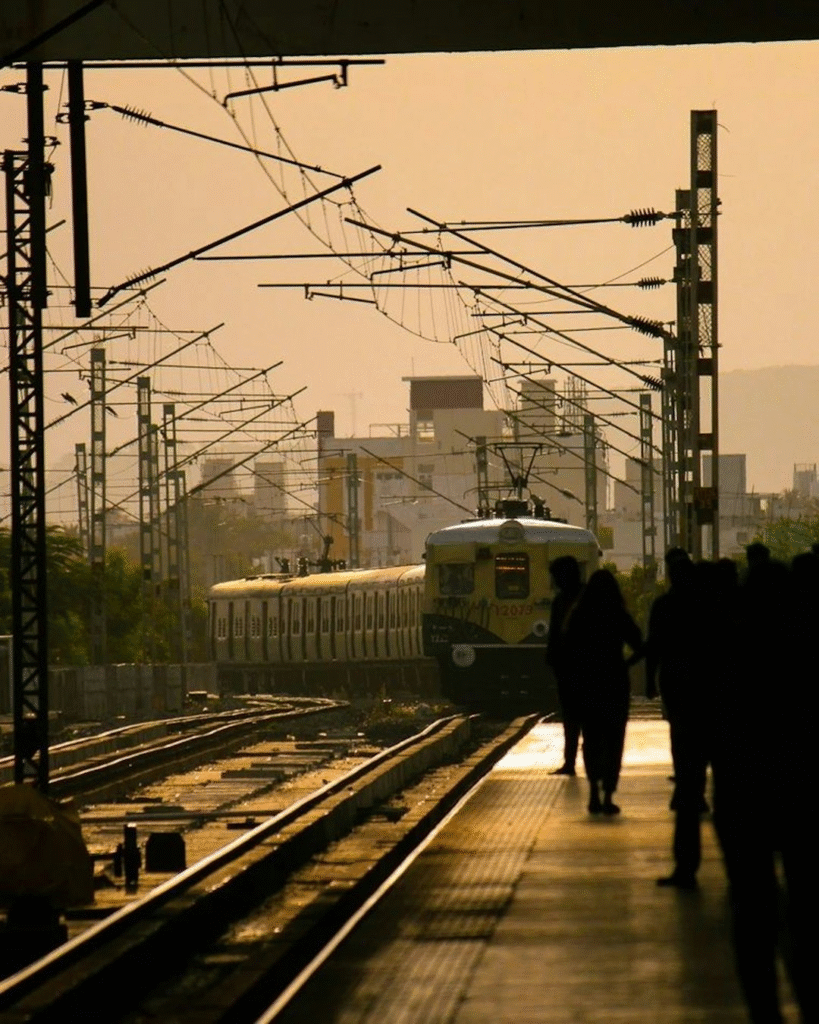
Bengaluru Suburban Rail Project (BSRP)
Overview
The Bengaluru Suburban Rail Project (BSRP) is an under-construction 149.348 km commuter rail network in Bengaluru, Karnataka. It will include 64 stations across 4 corridors.
Each corridor of the Bengaluru Suburban Rail Project is named after commonly found local flowers in Bengaluru. The corridors are:
- Sampige Corridor: Named after the Champa flower.
- Mallige Corridor: Named after the Chameli flower.
- Parijata Corridor: Named after the Prajakta flower.
- Kanaka Corridor: Named after the Priyardarsha flower or Kanak Champa flower.
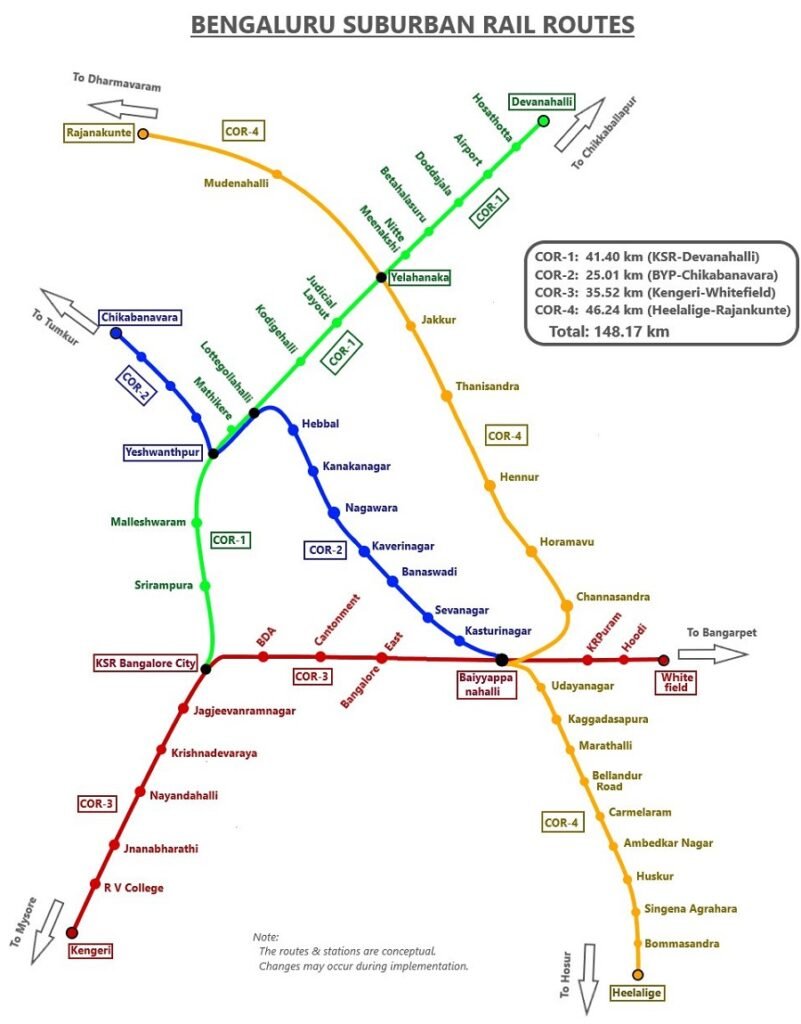
The Rail Infrastructure Development Company (Karnataka) Limited (K-RIDE), a special purpose vehicle, is responsible for the effective management and execution of the project.
The Bengaluru Suburban Rail Project was initially scheduled for completion by 2026. However, a number of factors have contributed to delays in the project, which may subsequently extend the completion timeline to 2027.
DPR & Approvals
- Rail India Technical and Economic Service (RITES) was entrusted to prepare the Detailed Project Report (DPR) and feasibility report of the Bengaluru Suburban Rail Project.
- BSRP received approval from the central government in 2020. The project was approved at the cost of ₹15,767 crore.
- The foundation stone ceremony for the project took place on June 20, 2023.
Key Features Of The Project As Per DPR’s Recommendation
| Parameter | Details |
| Coaches | Broad gauge, Air-conditioned, |
| Track Gauge | 3660 mm (Broad Gauge) |
| Traction System | 25KV AC, 50 Hz single-phase traction system |
| Signaling System | CBCTC signalling proposed for high-frequency operations |
| Initial Operations | 6-car rake with a headway of 12 to 20 minutes |
| Service Hours | 5:00 AM to midnight |
| Design Speed | 90 km/h |
| Maintenance and Stabling Facilities | Devanahalli (Corridor-1), Jnanabharathi (Corridor-3) |
Major Contractors Involved in BSRP
| Corridor | Work | Amount & Package | Firm |
| Corridor 2 | Design and construction of an elevated viaduct of length 8.027 km from Benniganahalli to Chikkabanavara, excluding station buildings | Rs. 849.97 crore | Larsen & Toubro |
| Corridor 4 | The contract includes the construction of an elevated viaduct spanning 8.960 km and an at-grade formation covering 37.920 km along the Heelalige–Rajanukunte section. | Rs. 1040.51 crore | Larsen & Toubro |
| Corridor 4 | The contract involves the construction of 9 stations (1 elevated and 8 at-grade) at Heelalige, Singena Agrahara, Huskur, Ambedkar Nagar, Carmelaram, Bellandur, Marathahalli, Doddanakundi, Kaggadasapura | Rs. 613 crore (Package C4A) | RVNL – Rithwik JV(Lowest Bidder) |
| Corridor 4 | The contract includes the Design & Construction of Nine 9 Stations (1 elevated and 8 at-grade) at Channasandra, Horamavu, Hennur, Thanisandra, R. K. Hegdenagar, Jakkur, Yelahanka, Muddanahalli, Rajankunte, | Package C4B | NCC Limited |
Land Requirement for the Project
As per the DPR, the project will come up on 101.687 acres of private land. In addition, it will utilise about 326.9 acres of railway land. In March 2025, Honourable Railway Minister Shri Ashwini Vaishnaw said in Lok Sabha that Indian Railways has transferred the land to K-RIDE; however, the progress of actions state government has been slow.

Funding Mechanism
The Central Government will provide financial support amounting to up to 20% of the total project cost, exclusive of land, Rehabilitation and Resettlement (R&R) expenses, as well as central and state taxes, representing its equity contribution. The State Government will match this contribution, resulting in a combined equity contribution of 40%.
| Particulars | Amount ₹( In Crore) | % Share |
| Equity by the Govt. of India | 2479 | 20.0% |
| Equity by the Govt of Karnataka | 2479 | 20.0% |
| Soft Loans from bilateral/multilateral funding agencies | 7438 | 60.0% |
| Total Cost | 12396 | 100.00% |
| Sub-Ordinate Debt for Central GST & Basic Customs Duty by GOI | 763 | – |
| Subordinate Debt for land and R&R by the Government of Karnataka | 1470 | – |
| Subordinate Debt for State GST by the Government of Karnataka | 785 | – |
| Sub-Ordinate Debt for IDC for JICA ODA Loan @1.4% by Govt. of Karnataka | 353 | – |
| Total Cost | 15767 | – |
€500 Million Loan from KfW
- A loan agreement of €500 million (approximately ₹4,552 crore) was signed between KfW Development Bank of Germany and K-RIDE on 15 December 2023. Additionally, this agreement was accompanied by a grant of €4.5 million (approximately ₹41 crore) designated for the project.
The loan is designated to facilitate the development of the following corridors:
Corridor 1: KSR Bengaluru to Devanahalli
Corridor 3: Kengeri to Whitefield
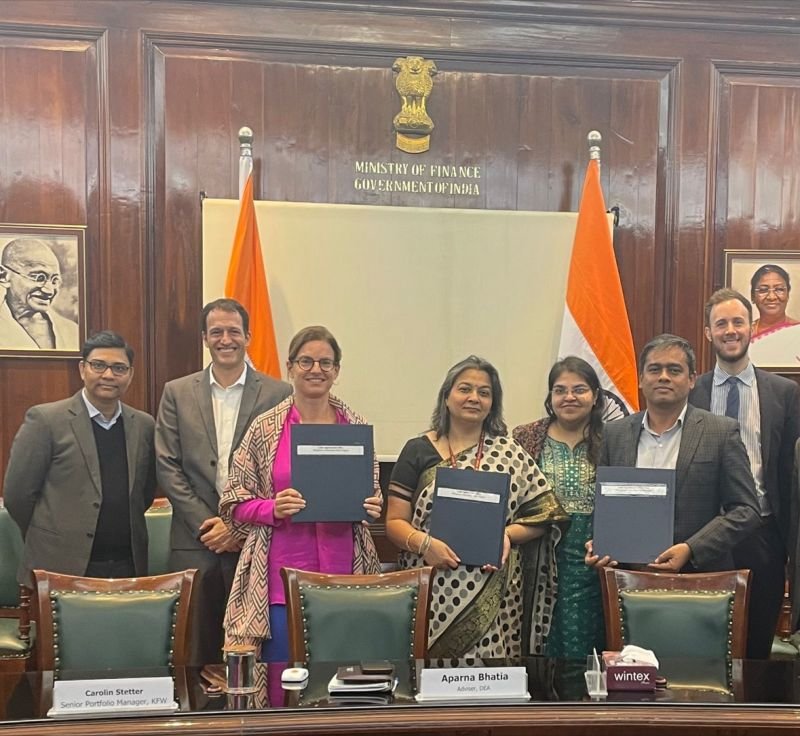
€300 Million Loan from the European Investment Bank (EIB)
- On 14 June 2024, the Ministry of Finance’s Department of Economic Affairs signed a Memorandum of Understanding (MoU) with the European Investment Bank (EIB) for a €300 million loan for the Bengaluru Suburban Rail Project (BSRP).
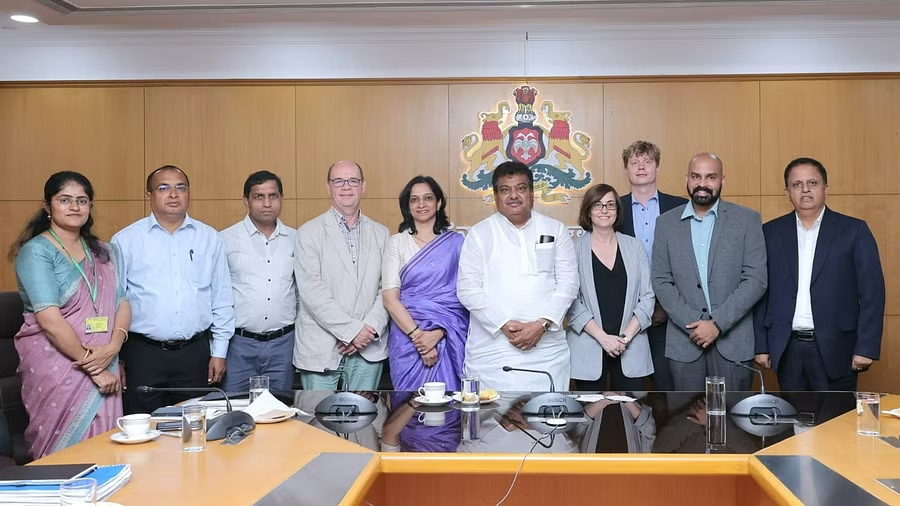
- According to K-RIDE, this agreement will facilitate the commencement of tenders for Corridor-1, Depot-2, as well as track and traction works associated with the project.
International Funding
- Railway Infrastructure Development Company (Karnataka), K-RIDE, secured foreign funding of about Rs 7,438 crore (approximately €800 million) for the Bangalore Suburban Rail Project.
Funding Received (as of May 31, 2024)
- ₹500 crore from the Ministry of Railways.
- ₹665.42 crore from the State Government.
Route Details
| Under Construction: | 54.9 km |
| Approved | 94.4 km |
| Elevated Routes | 45.392 km |
| At-Grade Routes | 103.856 km |
Corridor 1: Sampige Line
- Route: KSR Bengaluru City – Devanahalli via Yelahanka
- Length: 41.478 km
- Type: Elevated (19.22 km) & At-Grade (22.278 km)
- Depot: Akkupet Depot
- Number of Stations: 15 (8 elevated & 7 at-grade)
- Station Names: KSR Bengaluru City (interchange), Srirampura, Malleswaram, Yesvantpur (interchange), Muthyal Nagar, Lottegollahalli (interchange), Kodigehalli, Judicial Layout, Yelahanka, Nitte Meenakshi, Bettahalasoor, Doddajala, Airport Trumpet, Airport Terminal, Airport KIADB, Devanahalli
Corridor 2: Mallige Line
- Route: Baiyyappanahalli – Chikkabanavara via Hebbal
- Length: 24.866 km
- Type: Elevated (7.723 km) & At-Grade (17.143 km)
- Depot: Jalahalli Depot
- Number of Stations: 14 (6 elevated & 8 at-grade)
- Station Names: Chikka Banavara, Myadarahalli, Shettyhalli, Jalahalli, Yesvantpur (interchange), Lottegollahalli (interchange), Hebbal, Kanaka Nagar, Nagawara, Kaveri Nagar, Banaswadi, Seva Nagar, Kasturi Nagar, Baiyapanahalli (interchange)
Corridor 3: Parijata Line
- Route: Kengeri – Whitefield via Bengaluru Cantonment & K R Puram
- Length: 35.52 km
- Type: Elevated (10.40 km) & At-Grade (25.12 km)
- Number of Stations: 14 (4 elevated & 10 at-grade)
- Station Names: Kengeri, RV College, Jnanabharati, Nayandahalli, Krishnadevaraya, Jagjeevanram Nagar, KSR Bengaluru City (interchange), Kumara Park, Bengaluru Cantt, Bengaluru East, Baiyapannahalli, Krishnarajapura, Hoodi, Whitefield
Corridor 4: Kanaka Line
- Route: Heelalige – Rajankunte via Channasandra & Yelahanka
- Length: 46.285 km
- Type: Elevated (8.96 km) & At-Grade (37.92 km)
- Depot: Silkboard Depot
- Number of Stations: 19 (4 elevated & 15 at-grade)
- Station Names: Rajankunte, Muddana Halli, Yelahanka (interchange), Jakkur, Hegde Nagar, Thanisandra, Hennur, Horamavu, Channasandra, Benniganahalli (interchange), Kagadaspura, Doddanekundi, Marathahalli, Belandur Road, Carmelaram, Ambedkar Nagar, Huskur, Singena Agrahara, Bommasandra, Heelalige
The BSRP will include the following interchange stations
| Interchange Stations | Corridors |
| Bengaluru City | Corridor-1 & Corridor-3 |
| Yesvantapur | Corridor-1 & Corridor-2 |
| Lottegollahalli | Corridor-1 & Corridor-2 |
| Yelahanka | Corridor-1 & Corridor-4 |
| Benniganahalli | Corridor-2 & Corridor-4 |
Phase 2 of the Bengaluru Suburban Rail Project
To facilitate the connectivity between Bengaluru and 6 satellite towns, Phase 2 of the Bengaluru Suburban Rail Project has been proposed by the K-RIDE Board. This project is expected to cover a total distance of about 146 km. Railway Infrastructure Development Company Karnataka (K-RIDE) is seeking approval from South Western Railway to carry out a pre-feasibility study for Phase 2. In addition. K-RIDE has mentioned that this study will be conducted without any financial support from the Railways.
As per the February 2025 update, Phase 2 of BSRP will be integrated with the Circular Rail project, which spans 287km.
Proposed Corridors Under Phase 2
| Route | Length |
| Devanahalli to Chikkaballapur | 18 km |
| Chikkabanavara to Kunigal | 50 km |
| Chikkabanavara to Dobbspet | 36 km |
| Kengeri to Hejjala | 11 km |
| Heelalige to Anekal Road | 11 km |
| Rajanukunte to Oddarahalli | 20 km |
Challenges in the Bengaluru Suburban Railway Project
- Land Acquisition Derails the Progress of Project: Larsen & Toubro Suspends Work Activities
The BSRP Phase 1 is progressing at a very slow pace due to the unavailability of land. Currently, the work is under construction only on 2 of 4 corridors. L&T was awarded the 2 civil contracts for the project. Due to the unavailability of land, L&T has suspended its activities and also indicated that it might withdraw from the project if the land is not allocated.
As per the government official, a major portion of the land has already been handed over to the contractor, however, certain hurdles remain due to legal disputes and compensation-related demands.
- Lease Model Fails for Rolling Stock Procurement
As part of the Bengaluru Suburban Rail Project, a total of 306 coaches will be procured to operate across the network. The estimated cost of the rolling stock is approximately ₹4,300 crore. The funding for the rolling stock will be shared equally between the Government of Karnataka and the Government of India, with each bearing 50% of the total cost.
In January 2023, K-RIDE floated the rolling stock tender under the lease model to lower the project cost however this initiative received very weak response from rolling stock manufacturers. Acknowledging this, state cabinet approved Rs 2,135 crore for the rolling stock procurement in November 2024. However the central government has not released its share of funds for the rolling stock so far.
- ICF to Deliver AC Coaches for the BSRP:
Railway Minister Shri Ashwini Vaishnaw during his visit to Bengaluru in February 2025 directed the K-RIDE to acquire the rolling stock directly from ICF. However, instead of following the standard public tendering process, K-RIDE intends to procure the coaches through direct purchase. This process will require K-RIDE to seek a formal exemption from the Karnataka government under the Karnataka Transparency in Public Procurements (KTPP) Act. Specifically, the exemption must be granted under Section 4(g) of the Act, which allows the government to waive the tendering requirement in special circumstances.
Initially K-RIDE plans to acquire 51 train to start operations on the Corridor 2 and Corridor 4. As per the sources ICF has agreed to deliver 3-4 train sets by the end of 2026.
- Encroachment Issues: As stated by N. Manjula, Managing Director of K-RIDE, a total of 62 encroachments have been identified along the Baiyyappanahalli-Chikkabanavara Corridor, commonly referred to as the Mallige Line. These encroachments primarily pertain to private buildings and other unauthorised structures situated on railway land. These encroachments must be resolved before the commencement of construction activities. However, the clearance process is intricate and involves the issuance of formal notices and proper documentation, which may result in delays in construction progress.
- Utility Shifts: Corridor-2 is currently encountering challenges related to the relocation of utilities, specifically water and sewer lines managed by the Bengaluru Water Supply and Sewerage Board (BWSSB), in addition to the relocation of high-tension overhead power lines. BWSSB is required to relocate 15 water lines and 17 sewer lines from the construction site to facilitate the project.
- K-RIDE to Miss the Deadlines: The BSRP project is running behind its completion deadline due to the factors mentioned above. A 7.4 km section of the Line was projected to be operational by December 2025. However, as per the work progress it is unlikely to achieve this deadline. Corridor 4 is also expected to become operational by the end of December 2027, although the delay in the rolling stock procurement and land acquisition can further extend this deadline.
Benefits of the Bangalore Suburban Rail Project
1. Modal Integration: The Bengaluru Suburban Railway Project (BSRP) aims to establish a comprehensive integration with various transportation systems, including the metro, Bangalore Metropolitan Transport Corporation (BMTC) buses, existing railway stations, and bus terminals. BSRP stations are designed to include car bays, bus bays, and facilities for electric vehicle charging.
For Example, Hebbal station will serve as a critical multi-modal transport hub, linking metro services, bus depots, and suburban rail. Additionally, other stations, such as Bengaluru City, Yeshwantpur, and Benniganahalli, will similarly facilitate the integration of metro services with railway stations and bus depots
2. Decongesting Road Infrastructure: Once completed, the project is expected to reduce the strain on Bengaluru’s road infrastructure, which is currently operating beyond its capacity. As more people shift from private vehicles to public transport, vehicular traffic is likely to decrease.
3. Cost-Effective Travel: The BSRP is structured to provide ticket pricing that is more economical in comparison to existing metro services, thereby enhancing accessibility for a broader segment of the population
4. Economic Growth: The approximately 149 kilometres of routes planned for the Bengaluru Suburban Railway have been strategically situated to traverse densely populated areas. This alignment is anticipated to transform locations in proximity to stations into integrated commercial hubs. Consequently, this development is likely to stimulate local economies by creating employment opportunities and facilitating increased trade within the surrounding regions.
5. Environmental Benefits: By advocating for rail travel over road transport, the BSRP is expected to significantly reduce carbon emissions and foster a more sustainable urban environment.
Conclusion
The Bengaluru Suburban Rail Project shows immense potential for strengthening the transport infrastructure in the city. It has been strategically designed to connect satellite regions with the central urban areas. However, the implementation of the project has been progressing at a sluggish pace, which is likely to result in a delayed commencement of operations. Challenges such as land acquisition and delays in the procurement of rolling stock are currently hindering the effective execution of the project; furthermore, these issues are anticipated to contribute to an overall increase in the project’s costs. The BSRP is projected to alleviate traffic congestion by decreasing the number of road users by approximately 1 million individuals. Effectively addressing these challenges will be essential to realising the project’s potential to mitigate transportation issues within the city and to establish a benchmark for suburban rail networks across India.
